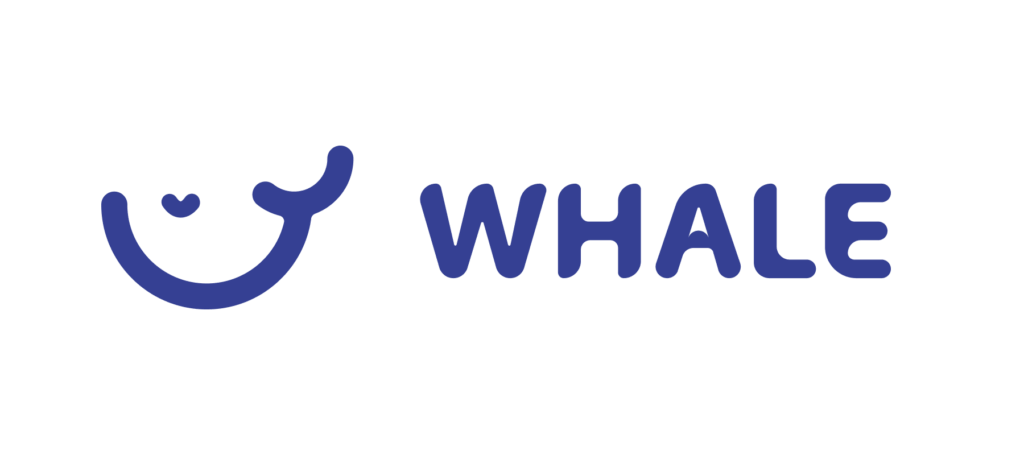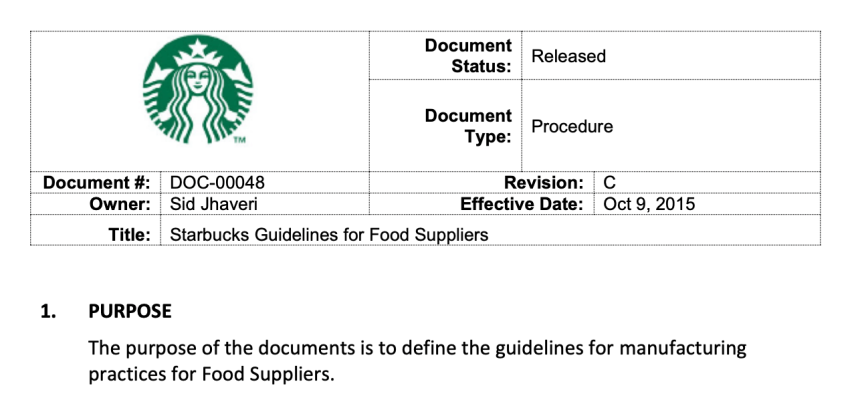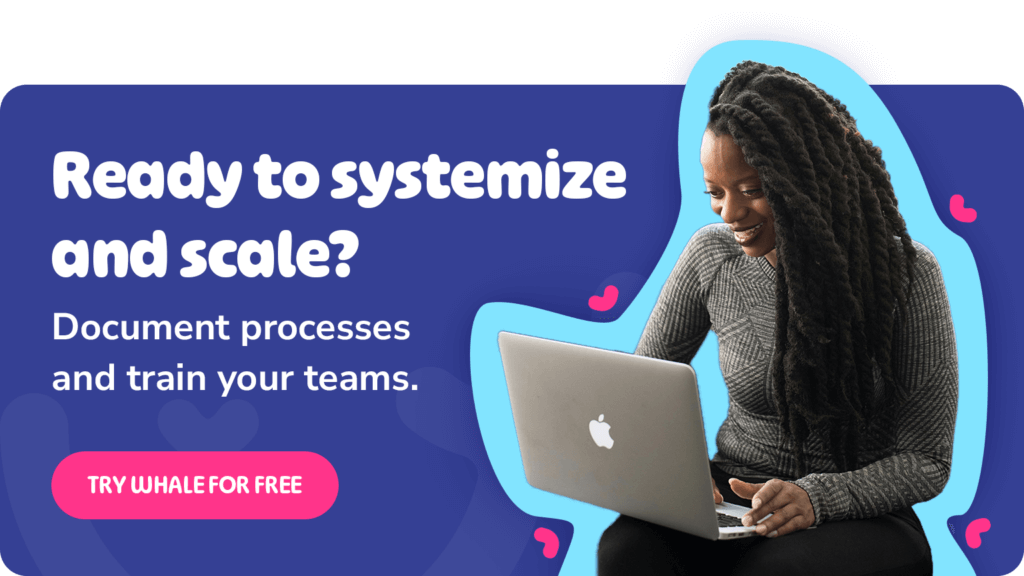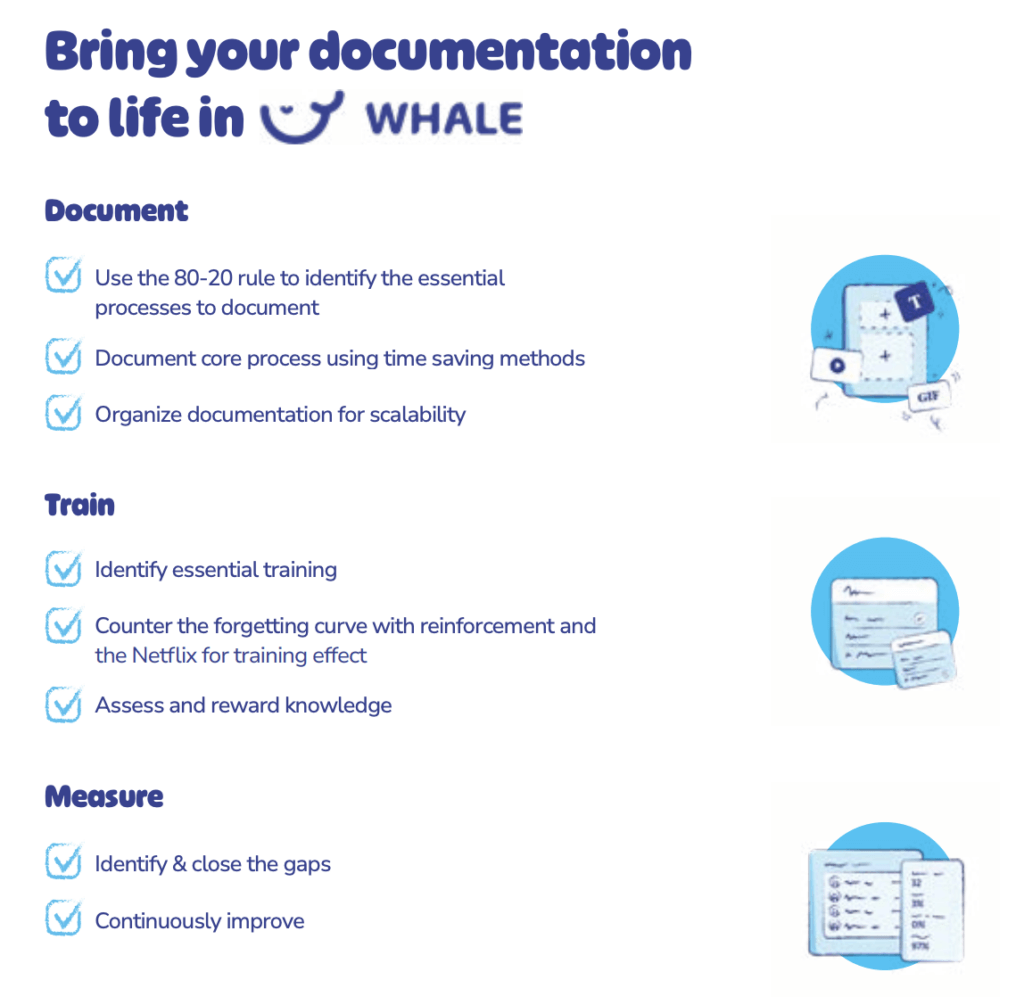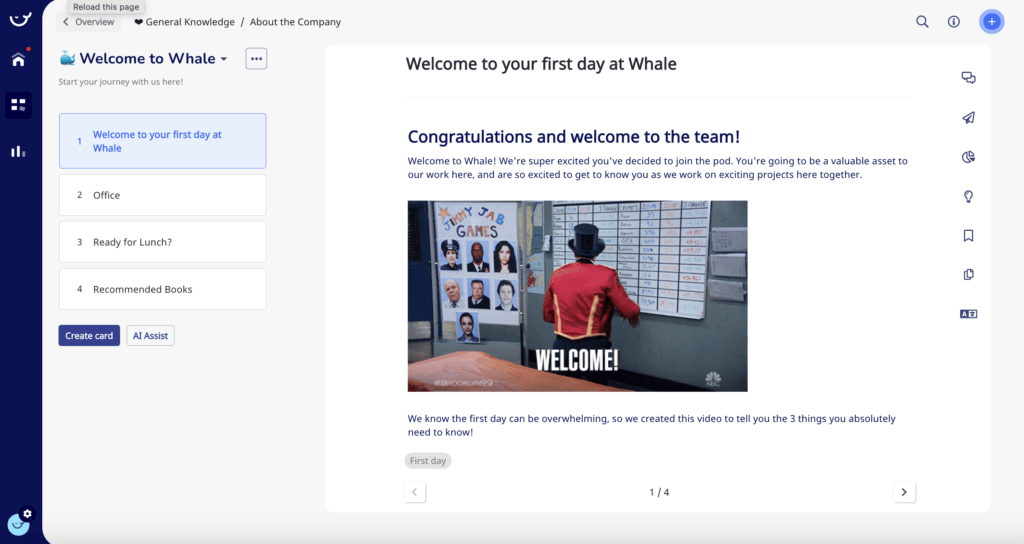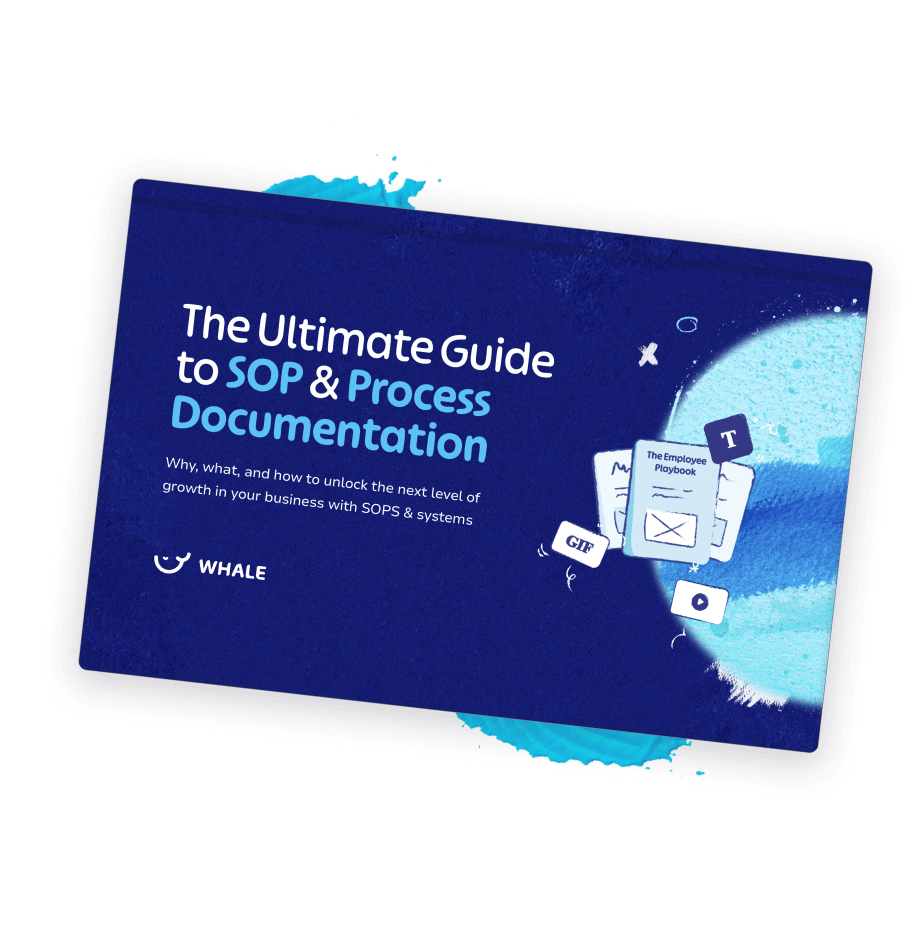SOP and process documentation for business
There is a lot more to SOP and process documentation than purely writing SOPs. What you need to realize is that SOP and process documentation are the very keys you need to scale your business.
It’s for this very reason we recently launched "The Ultimate Guide to SOP and Process Documentation" But if you want the summarised version, read all about it here.
The very first point we want to highlight is that utilizing SOPs and Process Documentation isn’t just for the benefit of standardized operations or even training team members. It’s for the growth and performance of the business.
In 2018, Ferrari achieved a sub-2-second tyre change in the pit stop of the Brazilian Grand Prix. To be exact, it was 1.97 seconds. Did they win the race? No but they did come second in the constructors championship.
In a world where seconds count, if only one of the 20-something of those people—including the driver—are off by a few centimeters, a whole race and weeks of work can be destroyed.
What does this have to do with your business?
You also operate in a highly competitive environment. And whilst seconds may not make a difference, when your team isn’t aligned, it will have a negative impact.
You don’t just need SOP and process documentation to get aligned, you need it for growth.
What is SOP and process documentation?
A standard operating procedure (SOP) is a set of step-by-step instructions to help someone achieve a specific task or process. Hence the word process documentation.
A process is a series of tasks that are done or required in order to achieve a specific goal. Typically, processes are higher-level documents devoid of too much detail.
SOPs and procedures (used interchangeably) are important tools for ensuring consistency, efficiency, and quality in organizational activities, and they help to promote best practices and standardization across an organization.
Thy are the must-have set of instructions that outline exactly how to run a task. Whether you’re showing how the hiring process works or how to manage entire projects, a clear SOP can help unify tasks so outcomes are the same across every team.
Starbucks - A SOP example in practice
Don’t believe that SOPs will help you scale?
One example of a company (and there are a ton more) that has successfully used processes to scale is Starbucks. Starbucks’ emphasis on processes and operational efficiency has contributed to its overall success and financial performance. By maintaining consistency in its operations and delivering a reliable customer experience, Starbucks has built a strong brand and customer loyalty, which has translated into financial gains. This includes revenue growth, Store-Level Profitability, operating margins, and ROI.
The Starbucks story began in 1971 along the cobblestone streets of Seattle’s historic Pike Place Market. Ten years later, a young New Yorker named Howard Schultz transformed the business, and as of November 2021, the company had 33,833 stores in 80 countries, 15,444 of which were located in the United States. The company recently announced long-term plans to increase its number of stores to 55000 by 2030!
Interesting but you don’t make coffee? No, you probably don’t.
But if you want to unlock the next level of growth in your business, you need to have a solid SOP and process documentation strategy in place.
What is the difference between process, SOPs, and work instructions?
In the realm of process documentation, various types serve distinct purposes, aiding organizations in achieving operational clarity and efficiency.
The best way we’ve found is to think about it in terms of why then (who + what + when) and then how. This outlines the difference between process, SOPs and work instructions.
- Process = Why and the BIG picture?
- SOPs = Who, what, and when?
- Work Instructions = How exactly?
Work Instructions zoom in even further, providing explicit details on how to perform particular tasks, ensuring precision and consistency.
But even within these types of SOPs, there are different ways of representing the information. These include;
- Graphs
- Infographics
- Videos
- Standardized written templates
Each type serves a unique function within the broader landscape of process documentation, collectively contributing to streamlined operations, enhanced communication, and the facilitation of learning and improvement.
The Importance of SOP and Process Documentation?
The importance of SOP and Process Documentation cannot be undermined. Here are a few of the ways that documenting your processes will help unlock growth faster.
Mitigate employee turnover
These documented guidelines provide employees with a clear roadmap for their roles and responsibilities, fostering a sense of clarity and purpose. When individuals understand their tasks and expectations, job satisfaction increases, contributing to a more stable workforce. This, in turn, saves on the costs associated with recruitment, onboarding, and training of new personnel.
Fix your leaky bucket
Do you manually onboard new team members? Do you perhaps trust old team members to empart knowledge to new team members but don’t have a structured and documented process?
If so then you have a leaky bucket in your business.
Process is the single most vital element in preventing knowledge loss in your organization.
Boosting employee value
Clearly defined procedures empower employees to develop their skills and expertise within a structured environment. This emphasis on learning and growth not only enhances individual performance but also elevates the overall competence and adaptability of the workforce. As employees become more proficient, their value to the organization increases, creating a positive feedback loop of development and productivity.
Well, if we haven’t convinced you by now, then check out the 6 Massive problems process documentation solves, which includes;
Process gives you the competitive edge
Documenting processes and SOPs can help you deliver a more consistent and seamless customer experience. which can give you a competitive edge in the marketplace.
Inconsistency
Once you have a competitive advantage, it’s essential to maintain the customer experience and levels of service across all locations. Consider the challenge Starbucks faces in delivering the same great cup of coffee and experience in a store in New York versus one of its stores in Singapore or the UK!
Starbucks customers know they can expect the same great coffee experience anywhere in the world, irrespective of the person they engage with.
Your customers should feel the same!
Enhanced efficiency
By establishing standardized processes, businesses can streamline workflows, minimize errors, and enhance overall efficiency. Time that might otherwise be wasted on confusion or redundant tasks is optimized, allowing employees to focus on value-added activities. This not only boosts productivity but also ensures that resources are utilized effectively, leading to tangible cost savings.
Employee onboarding and experience
With 51% of employees feeling unengaged at work (Gallup), creating processes your teams want to engage with should be your #1 priority.
Standard Operating Procedures (SOPs) significantly contribute to enhancing the overall employee experience within an organization and help ramp up onboarding.
Clear and well-documented procedures create a structured work environment, reducing ambiguity and fostering a sense of security among employees. When individuals have access to SOPs, they can navigate their roles with confidence, leading to a positive employee experience.
What are the TOP 10 Processes EVERY company needs?
As a scaling team, it’s natural that team members wear many different hats. So it’s pretty natural to feel overwhelmed at the beginning, especially if you don’t have anything documented.
We suggest this approach; document only 20% of the major steps that get you 80% of the results.
Consider the most important things that would need to be documented in your business and start there.
Here is a list of the Top 10 processes every company needs;
- Recruitment and Hiring Process
- Employee Onboarding and Training Process
- Sales Process
- Product Development or Service Provision Process
- Finance and Accounting Process
- Customer Service and Support Process
- Inventory and Supply Chain Management Process
- Advertising, Marketing and Events Process
- Quality Control and Assurance Process
- Human Resource Process
SOP Best Practice
Utilize subject matter experts
A subject matter expert (SME) someone who possesses deep and specialized knowledge in a particular area or field, with their in-depth understanding often coming from extensive education, training, and practical experience within the chosen domain.
Why, then do so many business leaders try to document processes all on their own without utilizing subject matter experts?
Empower your subject experts to take ownership of processes in their respective areas to leverage their expertise and make documenting processes easy.
Utilze SOP Software takes it to the next level
If you’ve been in the business game for long, you’ll know that Google Docs is where documentation goes to die (yep, we said it).
Because using a tool that’s made for document creation to manage your docs will never work. (The same goes for outdated paper handbooks and any tool that doesn’t focus on leveraging your content.)
That’s where Standard Operating Procedures software comes in.
By choosing a tool to digitize, centralize and leverage your processes, you can make sure your employees get the right information at the right time and actually use it.
Save time documenting
- AI Assist™
- Templates
- Gallery
- Screen recorder
- GIF & image library
Train and amplify the value of your playbooks
- Assignments
- Training flows
- Quizzes
- Web Extension
- Search facility
Measure & gain insight
- View questions
- See overall scores
- See document views
- Set document reviews
- See completion
Mistakes to avoid in documenting your SOPs
Navigating the intricacies of documenting processes within a business often involves overcoming common pitfalls. Recognizing these challenges is the first step toward creating effective and sustainable documentation practices. From perceiving the task as an overwhelming mountain to fearing that processes may stifle creativity, organizations encounter various hurdles.
Make sure you aren’t;
- Making a mountain out of a molehill
- Neglecting the why of documentation
- Trying to do it all on your own
- Overwhelming people with information overload
- Creating processes that are boring and that no one will read.
Avoiding these common mistakes even before you start will make the process (excuse the pun) of documenting your processes, ALOT easier!
How to document SOP and Process Documentation?
Okay, so you’ve realized it’s time to go paperless and digitally document your processes.
But how?! It’s so overwhelming!
Don’t panic!
Documenting your processes from scratch is easier than you think! It’s simply a matter of identifying what SOPs and processes to document, documenting, and organizing the content.
Identify topics to document using methods such as THE NEW HIRE RAMP UP. This means thinking about what topics a new hire would need to ramp up quickly.
Alternatively, consider THE DELEGATE MATRIX, which considers thinking about If you were to hand over tasks to another team member, what tasks would those be?
For more methods of identifying, check out our Ultimate Guide to SOP and Process Documentation.
When it comes to documenting, Nike was right, JUST DO IT!
And remember;
- Use templates to make document creation easy
- 50% is better than 0%
- Focus on visual SOPs and add images, video and even GIFs to make it engaging
- Focus on common and repeatable tasks, not exceptions
- Use your company’s common terminology
- Make the crucial points evident to the reader. Don’t go into the details too soon!
- Utilize AI technology such as Whale’s AI Assist to help you create SOPS in seconds!
And when it comes to organizing company information and documentation, we suggest using SOP Software to help you create seamless information transfer that speeds up your organizational efficiency.
How to write and format your SOPs
Whether you decide to use a template or whether you decide to start from scratch on your own or even use AI to get you started, there is a best practice to writing your SOPs.
- Define the Purpose of Your SOP
- Use a consistent format
- Ensure your SOP is a manageable size – no one wants to read a 70 page document
- Engage with team members and utilize subject matter experts to create specialized documentation
- Mind your words and the language you utilize to ensure it doesn’t contain jargon.
Creating Standard Operating Procedures is never about documentation for ‘its own sake’. So before you start writing, think about why you are generating the document and for whom. And start with that! E.g. this process is to help finance manage accounts. Or whatever the purpose of the document is.
In terms of formatting, every document should contain;
- The purpose and intent of the SOP document – i.e. why it was created
- A summary overview – Who and what should be governed by the SOP?
- Who does what – List all the different job roles and subtasks required to complete the process defined in the SOP.
- Create a step-by-step description of the task – Ask yourself, can it be understood by its target audience or followed by someone who has never done the task before?
- Important references – List and link to related documents as clearly as possible – in a way that supports the intention of the SOPs. This might include providing links to appropriate standards and regulations, approved versions of other and third-party documentation or simply links to relevant information.
DO…
- ✅ Make it easy to understand
- ✅ Make it visually appealing
- ✅ Answer the question who does what and how?
DON’T…
- ❌ Use jargon and difficult terminology
- ❌ Make it difficult to understand
3 Helpful tips to create and organize your SOP and Process Documentation
- Name your documentation for easy organization
- Assign ownership and review regularly
- Store and share all documentation from one central knowledge base
How to train using SOP and Process Documentation?
Have you ever wondered why Nokia lost the game to Apple? The bottom line is that Nokia lost out because it failed to learn, and it failed to learn fast.
Continuous learning keeps your business competitive and improves employee retention and engagement, thereby improving productivity.
To capitalize on company knowledge, there are three types of SOP training a business needs to consider;
- New employee onboarding
- Ongoing Employee Training
- Transitional Training
3 Helpful tips to train your teams SOP and Process Documentation
Some studies report that up to 70% of knowledge is lost within 24 hours of learning. Retraining people regularly can ensure long-term retention and compliance.
- Use quizzes for continuous learning
- Utilize “The Netflix Effect” for engagement because there’s a reason no one reads 72-page documents.
- Create tailored learning journeys utilizing technology
How to review your documentation?
Why on earth would you need to review your SOPs? 🤔 Surely once you’ve gone through the challenge and effort of assimilating your company processes and SOPs, that’s enough?
No, because like you, your business is constantly changing and you’re constantly improving the way you work.
The good news is that using subject matter experts, you don’t have to do this all alone. Using software or even a simple calendar reminder for your subject matter experts means documentation will remain up to date consistently.
How to measure SOP and Process documentation?
Your processes and improvement thereof should lead to a bottom-line impact in your business. You know the saying “If you can’t measure it, you can’t manage it.”
And if you want to scale your business, you’re going to have to measure progress every step of the way.
In and of itself, SOP and process documentation are worthless. If it’s not used, it’s worthless. If it’s not up to date, it’s worthless.
But you’ll soon realize the value when;
- Onboarding new employees
- Training team members
- Trying to find relevant information
When you’re implementing SOP and process documentation, not only should you be able to state the value to the business, but you should also be able to quantify it. That’s why we created this piece to calculate the ROI of Whale in your business.
The Ultimate SOP and process documentation checklist
This may sound somewhat complicated but it isn’t. Here’s a quick checklist we put together to help:
Before getting started
- Involve the right people and set subject matter experts
- Choose the right SOP software to help you
- Get your mindset right!
Document
- Use the 80-20 rule to identify the essential processes to document
- Document core process using time-saving methods like templates and AI Assist
- Organize documentation into a central repository for scalability
- Use simple direct language
- Name SOPs appropriately
- Keep to a standardized format and layout
- Utilize the Netflix effect to make SOPs and processes engaging
Train
- Share processes with the right people and ensure that SOPs are followed by everyone
- Identify essential training and set up training flows
- Assess and reward knowledge using quizzes to combat the forgetting curve
Measure
- Identify & close the gaps
- Continuously improve by reviewing SOPs
SOP examples we love!
What are great SOP examples? The most important thing to remember is that the very BEST SOP examples are the ones that people read and engage with!
Now we’d like to share a few examples that we love!
We have to start with one of our own because we’re Whaley (really, get it?) proud of our work at Whale! When we welcome a new team member, our SOP tries to engage them from the beginning. We also include video and the most important information for a first day at the office, like where to get lunch!
We also love examples of how others are using SOPs in their businesses not just to train their teams but also to transform their businesses.
We LOVE this example from Hubr who is using Whale to digitalize the real estate industry. They utilized their SOPs to create a whole training academy.
Looking for specific SOPs?
Check out;
Bottom line? SOP and Process Documentation help you scale
In essence, Standard Operating Procedures (SOP) and comprehensive process documentation are indispensable tools for achieving scalability within any organization.
Businesses can establish a structured framework that promotes efficiency, consistency, and adaptability by meticulously outlining the step-by-step procedures and protocols that govern various aspects of operations. SOPs serve as a roadmap, ensuring that tasks are executed uniformly across different teams and departments, thereby minimizing errors and enhancing overall productivity.
As a company scales, having well-documented processes becomes paramount for onboarding new employees, streamlining workflows, and fostering a culture of continuous improvement. In essence, SOPs and process documentation form the bedrock of scalability, providing a clear and standardized path forward for sustained growth and operational excellence.
Additional Resources
Loved this piece and want to know more?
Here is a list of resources not mentioned in the article;
- Ace your business process documentation in 4 easy steps
- Getting started with SOPs
- Feeling scattered? Here’s how to organize your business
- 3 Challenges in documenting SOPs and processes
- Process Improvement Ideas: The Ultimate Wishlist
- Implementing process? Why you absolutely need change management
- The Future of Knowledge Sharing
If you’re struggling to maintain efficiency in your business and to scale operations, then you should definitely check out our newly released Ultimate Guide to SOP and Process Documentation.
The ULTIMATE guide features;
🚀 The TOP 10 Processes EVERY company needs?
🚀 The Ultimate Growth Framework
🚀 Overcoming Common Challenges
🚀 How to train with SOP & Process Documentation
And more!
Ultimate Guide to SOP & Process Documentation
The why, what, and how to unlock the next level of growth in your business with SOPS & systems
